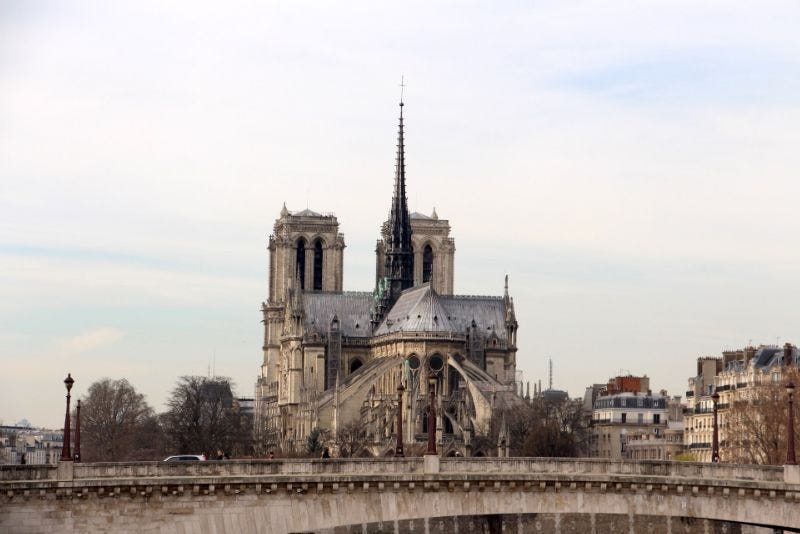Emily in France 🇫🇷 The Loss of Notre Dame

Notre Dame is forever changed.
When you move to Paris as an Anglophone student, three choices of employ present themselves: teach English, work as a bartender in an English-speaking bar, or be a tour guide. Since I'm a diurnal creature, I opted for the latter when, in 2010, I relocated (permanently) to Paris.
Since then, I can't count the number of times I've walked through the cathedral's magnificent halls, called attention to its centuries-old rose windows, to its columns worn down under so many fingertips, to its evocative statues, each with its own story. I've recounted how my literary hero, Victor Hugo, used his talent (and his influence) to keep what had, by the early 19th century, become a decrepit shadow of its former self, from being destroyed in the name of change and progress. His Notre Dame de Paris is a work of persuasive discourse as much as a story of obsession, love, and loss.
But perhaps my favorite story to share about Notre Dame has always been the one I save for the end: the fact that Eugène Viollet-le-Duc, tasked with its 19th century renovation following Hugo's successful literary campaign, added the spire that had been lost to time, the one we all saw engulfed in flames last night. He also added 16 statues around it – the 12 apostles and four evangelists – putting his own face on that of Doubting Saint Thomas.
I've always resonated with this decision – the plight of any artist to believe, truly, that the bit of ourselves that we've put out into the world is really worth anything at all.
As we can see from the reaction resonating around the world, Viollet-le-Duc's was, and the loss is immeasurable.
I explored what Notre Dame means to Paris – to its history, its culture, its past, its future, for Fodor's. I hope to share other, happier news soon.
A bientôt !
Emily in France


